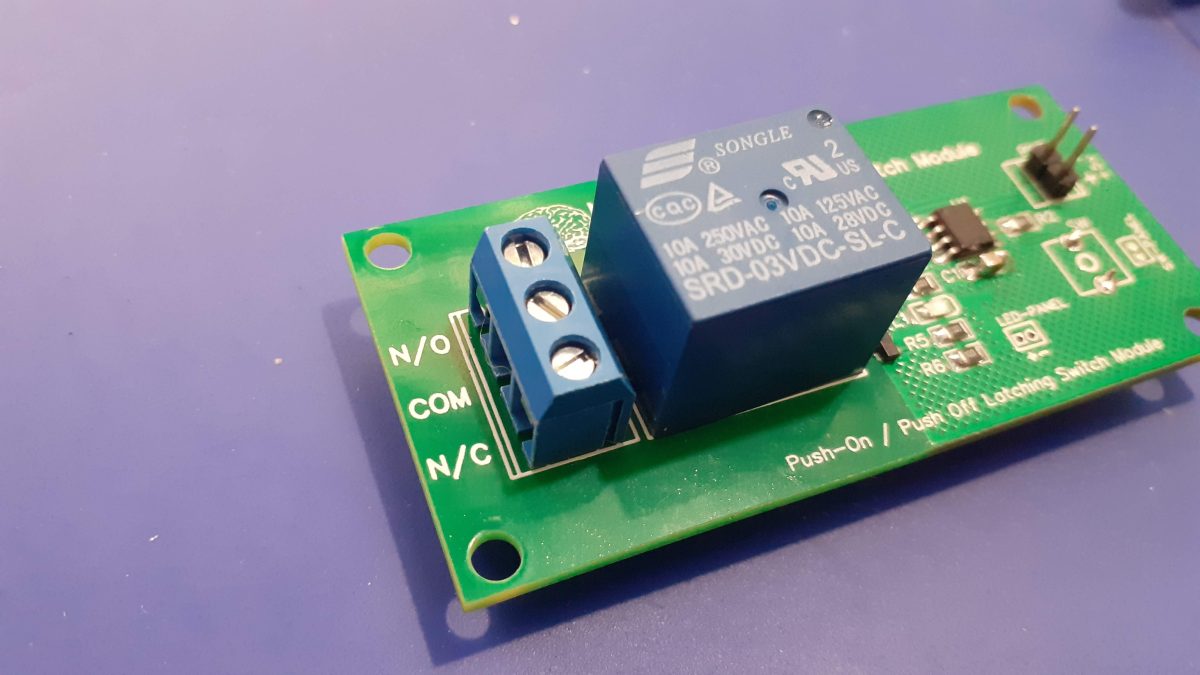The humble 555 timer IC has been around for a very long time. It can be configured to do a lot of timer based functions, the most common know being to flash LED’s at a given frequency.
A slightly more unknown function of this versatile chip is the capability to be configured as a latching switch, -meaning a press on press off switch-.
In this short two part series, I will show two such latching switch modules that I have designed around the 555 timer. In the first part, we will look as a single latching switch, with an attached relay output to switch higher current and voltage loads safely.
The PCB

With only 11 components ( excluding the relay and connectors or course) this is an extremely easy and cheap circuit to build. It can also quite easily be built on a breadboard, or strip board, if you do not want to use a custom PCB.

Operation of the Circuit
The operation of this circuit is quite easy. The PCB is powered by a 5v supply, in this case, but the 555 can allow for a supply voltage of up to 15v DC ( Please note that the Relay needs to be capable of accepting the input voltage without damaging its coil… you would thus have to select a suitable model)
When you press and release the push button, pin 3 of the 555 will go high, lighting the indicator LED, as well as pulling the gate of the BSS138 Mosfet High, allowing current to flow through the relay coil, thus energising the contacts.
The relay will stay energised until you press and release the button again, or power is removed from the circuit.
Possible uses
This type of circuit has many uses, like switching a light on and off with a single press. It is obviously cheaper and easier to just use a toggle switch, but it is also interesting to explore the possibilities of a discrete component solution, without a microprocessor, to achieve a result similar to that of a toggle or rocker switch.
Manufacturing
The PCB for this project has been manufactured at PCBWay.
Please consider supporting them if you would like your own copy of this PCB, or if you have any PCB of your own that you need to have manufactured.

More Pictures






